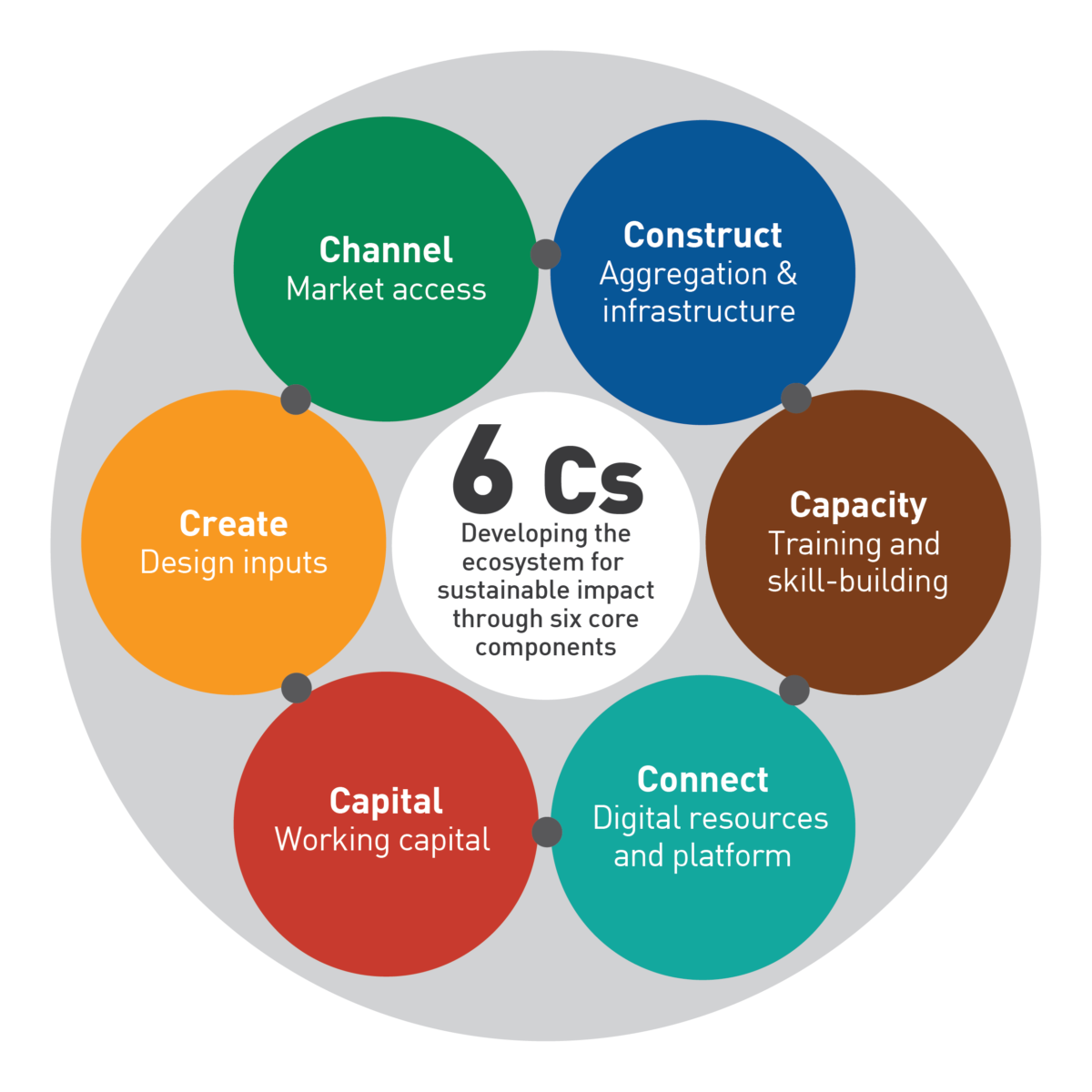There are many factors that come into play for ensuring the success of social enterprises. Within the artisanal sector, also known as creative manufacturing, Industree Foundation champions a framework for success that it calls the 6C Model, which it has developed and refined from three decades of experience in establishing artisanal enterprises. The 6C Model addresses the key activities for creative manufacturing enterprises from inception to growing and managing mature organizations.
Construct: Construct refers to mobilizing and aggregating artisans into a formal enterprise. Activities include recruitment of artisans, creation of a legal structure with equitable and participatory ownership for artisans, and integration of professional management. Basic infrastructure for the enterprise is also established. Key benefits of Construct include: formal employment for artisans (often for their first time) that meets safety, quality, financial, and other compliance standards; the ability to scale up the enterprise and thereby positively impact the lives of many artisans; equitable sharing of created wealth with artisans; and giving decision rights to artisans to shape their own destiny.
Capacity: Capacity refers to skill development of artisans. Skills are envisioned broadly to encompass technical craft, skills for career progression within the enterprise, and softer skills employable beyond the enterprise that are aimed at achieving social impact targets. Examples of broader skill building include personal financial management, gender equality, and community health. Industree employs its comprehensive 6Y training program, where the Ys stand for You (the artisan), Your family, Your community, Your enterprise, Your World, and Your Planet. The aim of Capacity is no less than total transformation of the lives of artisanal communities and their future generations.

Create: Create refers to product design and manufacturing methods. Product design marries artisans’ talents and creative sensibilities with the aspirations of end consumers. This may require market research, material selection, and product development employing professionals to bridge gaps between artisans and consumers. Manufacturing methods focus on employing tools and processes to enable production at scale, achieve consistent quality, and enhance productivity. Emphasis is placed on active and continual collaboration and co-creation across artisans, buyers, designers, and manufacturing professionals. The end result of Create is the availability of artisanal products at scale for modern markets.
Capital: Capital involves securing various types and levels of funding during different phases of the evolution of the artisanal enterprise. Seed capital in the form of grants is essential for establishing the unit as well as building capacity. Long term debt may be obtained for acquiring physical assets. Working capital, which can include grants and debt, allows production to start and continue. The goal of Capital is to enable artisanal enterprises to start, grow, become profitable, and achieve self-sustainability.
Channel: Channel involves linking artisanal enterprises to local and global markets through a variety of activities, such as networking, fairs, exhibitions, and liaising with buyers. The enterprises engage in B2B, B2C, and B2B2C commercial relationships, both brick & mortar and online. These relationships are crucial for providing the company with ongoing business leading to their overall stability and sustainability.
Connect: Connect refers to using technology to link artisanal enterprises with their ecosystem. The ecosystems of social enterprises tend to be more complicated than those of pure commercial enterprises. This is due to the need to verifiably fulfill mission-critical social commitments in addition to economic ones. This need leads to the involvement of additional types of players with more diverse communications and transactions, and more comprehensive monitoring, measurement, and auditing of impact. Technological tools are essential for the artisanal enterprise to be interconnected with its ecosystem and achieve its social impact mission at scale.
The 6C Model offers a tested pathway for artisan organizations to experience consistent growth and become self-sustaining, providing their beneficiaries with dependable livelihoods.
0 Comment
Leave a Reply